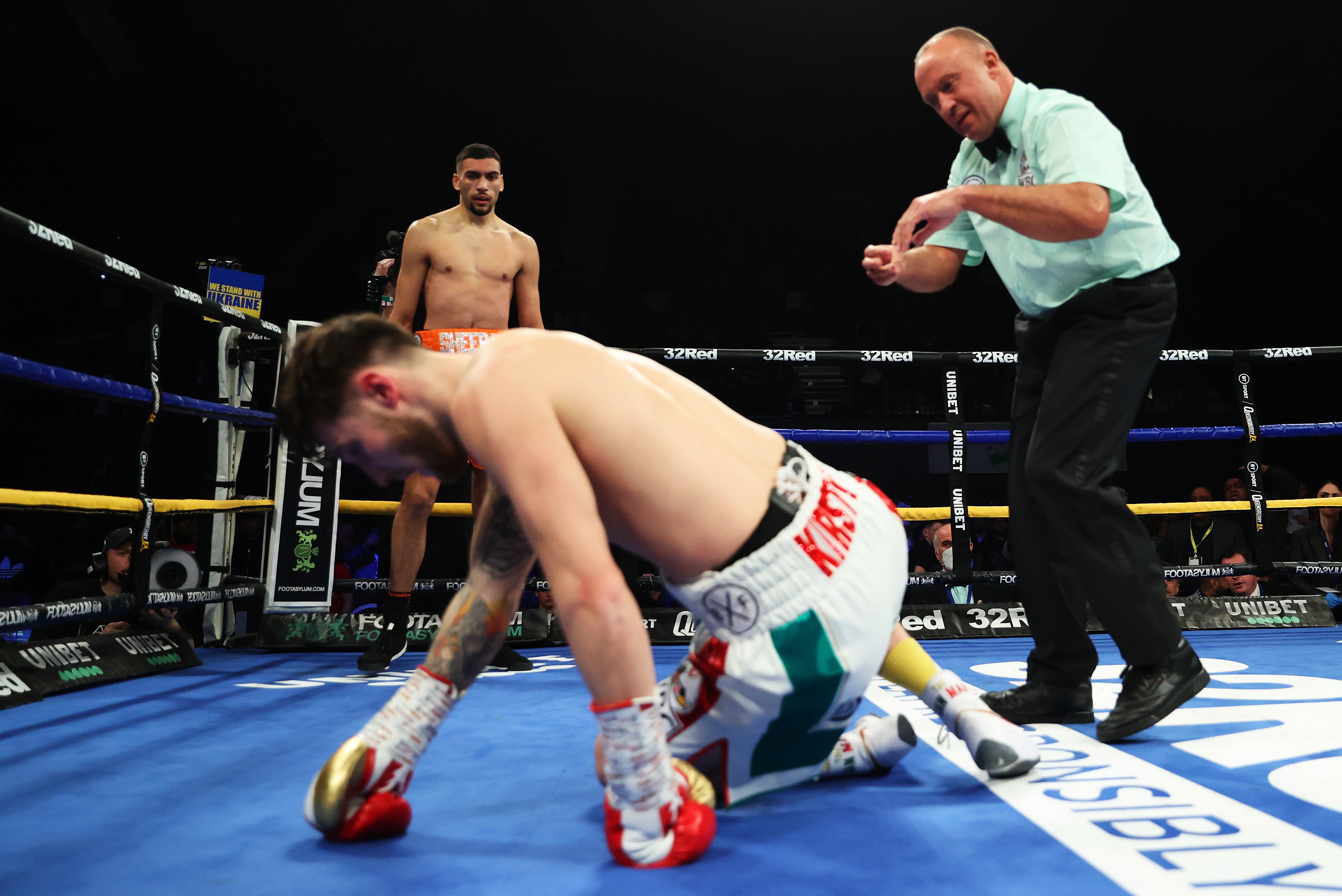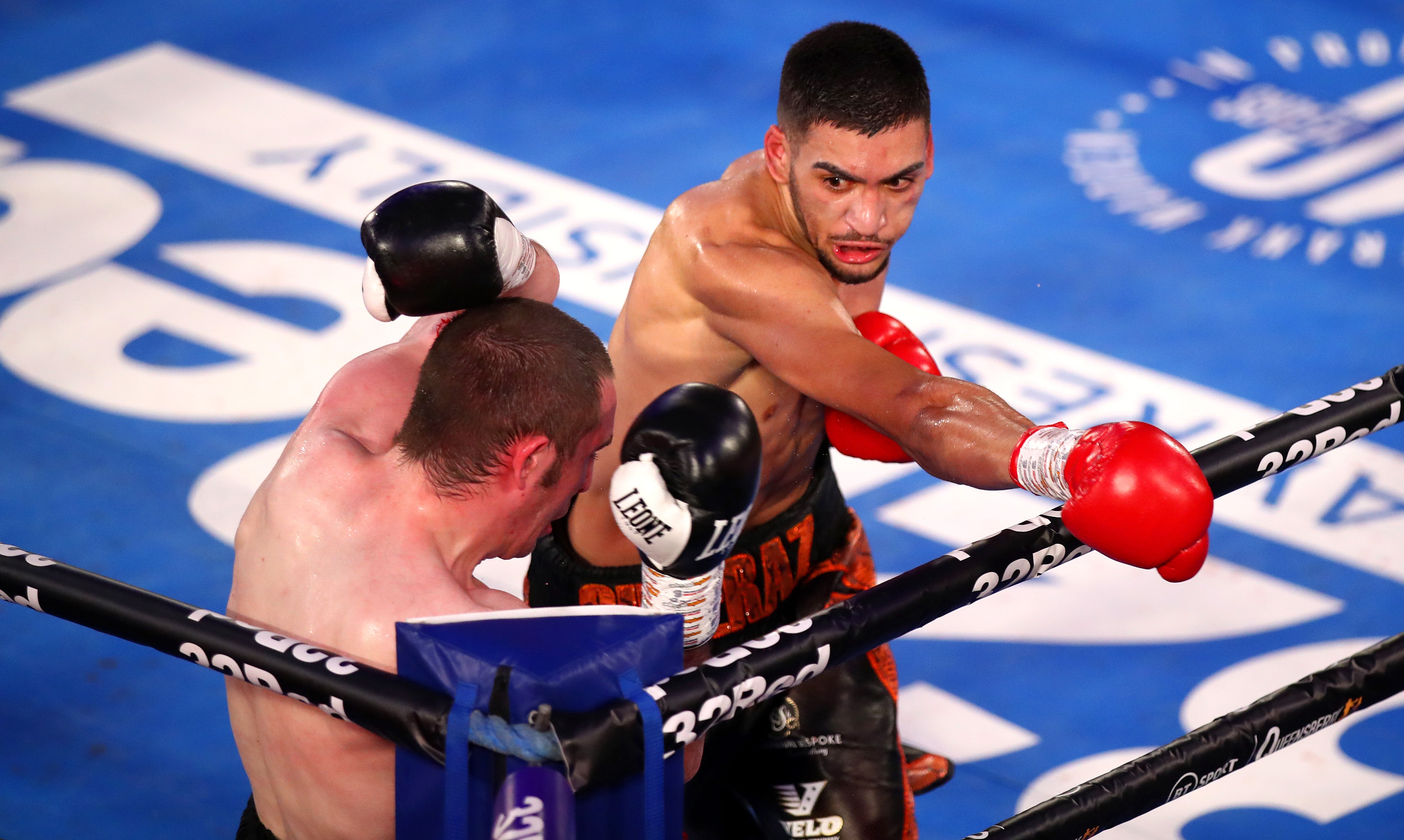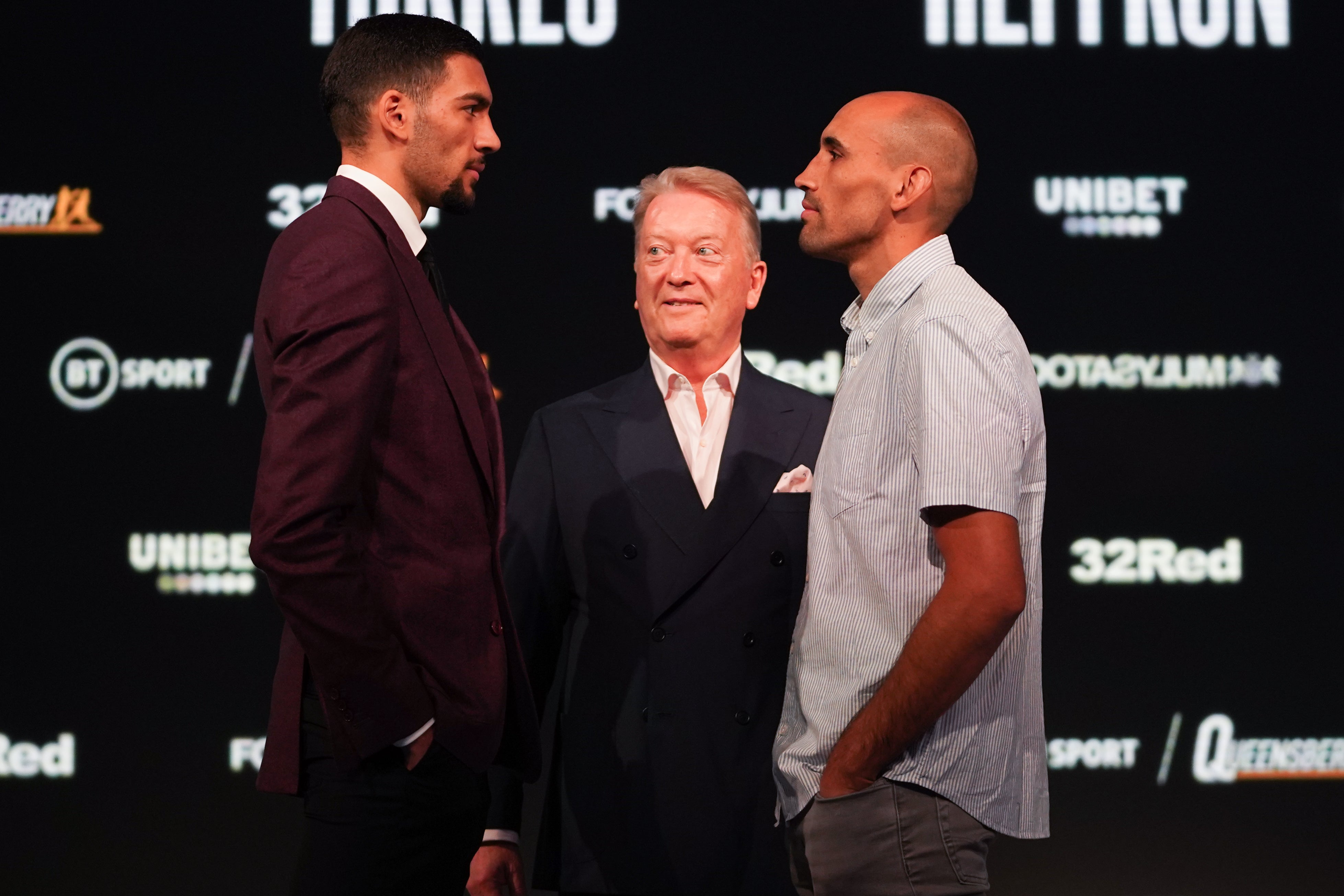
When Hamzah Sheeraz last stepped in the ring competitively, just four months ago, he effectively ended the fight with a punch that wasn’t on, from an angle that wasn’t open. As Jez Smith lunged at his fellow Briton, Sheeraz pivoted to his left so sharply that he was barely on one foot as he drove a hook into his opponent’s jaw. Sheeraz quickly planted his feet and propelled a right straight in Smith’s direction – or rather to where the 28-year-old would have been, had he not already slumped to the canvas.
That first-round knockdown did not in fact see the fight called off, but Smith was clearly done, scrambling for consciousness as those around him scrambled for his lost mouthguard. Less than a minute into the second round, Sheeraz put Smith down – and away – to claim the vacant WBC International Silver middleweight title at Wembley Arena.
Two weeks out from his next fight, 23-year-old Sheeraz is sat across from me in a hyperbaric oxygen chamber at Hum2n, a clinic in Chelsea with a focus on “integrative health” and “biohacking therapies”.
“That fight against Jez, 90 per cent of it was instinctive,” Sheeraz says. “Even that hook that I knocked him down with, it wasn’t something we’d practised in camp. It was just all on instinct. To be honest, when I hit him, I didn’t even know it was a knockdown. I thought he’d kind of tripped up or something, then I looked at him and thought: ‘Oh, he’s hurt...’ I didn’t throw no power in that shot, it was more placement. Even when I finished him off with the one-two, it wasn’t nothing we’d practised. It was over before I knew it.”

As much as Sheeraz may be able to rely on instincts, his investment in training – which has taken him to Los Angeles – and focus on health optimisation have also helped him to craft a 15-0 professional record, with 11 of those wins having come via knockout. Sheeraz will hope to further improve that record on Saturday night when he faces Francisco Emanuel Torres at the Copper Box Arena in London’s Olympic Park.
It will not be Sheeraz’s first time fighting at the venue, but it will be his first time headlining there – marking another step towards his aspirations of main-eventing at Arsenal FC’s Emirates Stadium, as well as Madison Square Garden in New York City.
“I know everybody says, ‘I want to light up the Vegas strip,’ and this, that and the other...” Sheeraz starts. “I went to Vegas for the Tyson Fury vs Deontay Wilder [trilogy] fight. The fight itself was amazing, but – maybe because it was Covid recovery – the buzz wasn’t there for me. I haven’t been to Madison Square Garden, but ever since I’ve been young, I’ve thought about it. Now I’ve gone out to America and I’m starting to see these things, I’ve locked it in my head: I definitely want to headline over in New York, MSG one day.
“And I would love to fight [at the Emirates Stadium]. Frank [Warren, promoter] and I have got that in our roadmap: to build my name up a lot bigger here and then fight there. Fighting in London is great and everything – I’ve fought here all my life – but I definitely want to fight all over the world, just get my name around the world and become an all-time great.”
Sheeraz, who once emerged for a fight in an Arsenal shirt with Bukayo Saka’s name on the back, even trained with ex-Gunner Joe Willock in LA recently. “It was a great experience and kind of surreal, training with someone you’ve seen on TV and being a massive fan of Arsenal,” Sheeraz says. “He’s at the pinnacle of football, and I’m very inquisitive when it comes to different sports.

“If you sat Andy Murray in front of me, I’d ask him a million questions about tennis; Lewis Hamilton, I’d ask him a million questions about Formula One. I did the same thing with Joe. He’s a year younger than me, but maturity-wise he’s beyond his years. I was learning a lot off him. Who knows? It might be that one little thing out of 100 things he’s told me could benefit me in my career, because he’s an elite athlete.”
Sheeraz’s intent to grasp the deepest possible understanding of his sport is something that he believes would also serve more casual fans well.
“Everyone just thinks it’s a brute sport and that you go in there and smash each other to pieces,” he says. “They don’t realise that actually it’s a fine art, and there’s reasons as to why we do certain things, throw certain shots, move the way we do. The die-hards understand, but when we watch football, before the game they’ll give a massive analysis on a screen, and I think if they did that for boxing, a lot of people would become more understanding of the sport.
“For a southpaw, the obvious thing to do is move to your left, to get away from their backhand. If someone explained that during Anthony Joshua vs Oleksandr Usyk... I know commentators say it, but once you explain something on a diagram, then it registers. It can give the average boxing fan a totally different understanding of the sport. Hopefully they do it for the AJ-Usyk rematch.”

Sheeraz is guided in large part by father Kamran – a former county cricketer with experience as a boxing official – and Taz Khan, uncle of British boxing icon Amir Khan. The pair are confident that Hamzah’s journey can take him to a world title, but they are also aware that in-ring careers are fleeting. Sheeraz’s understanding of boxing and his ability to articulately convey his thoughts might position him well for a role as a boxing analyst down the line, but for now the focus is on Saturday night, and on Torres (17-3-1, 5 KOs).
“With me and Ricky [Funez, coach], it’s 90 per cent on what we do, because if you concentrate on what the opponent could do and you get it wrong...” Sheeraz begins. “I understand they say plan A and plan B, but when you’re in the ring it’s a totally different concept.
“Once you’ve practised something, which is plan A, 80 per cent of your plan is that; 20 per cent is plan B.”
On Saturday night in London, Sheeraz will hope that his plan A forces Torres to resort to plan B.
“If that happens, really and truly you’re screwed.”







